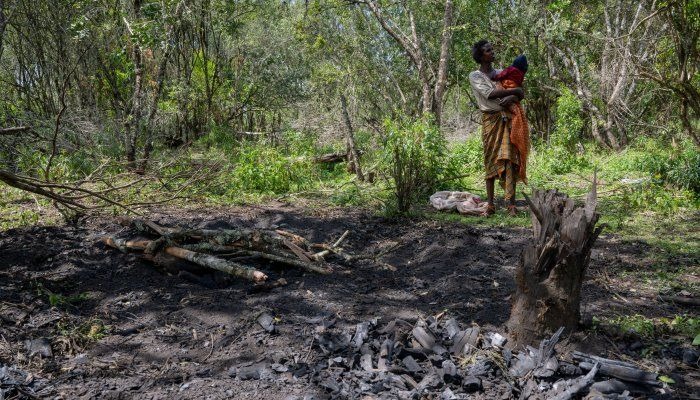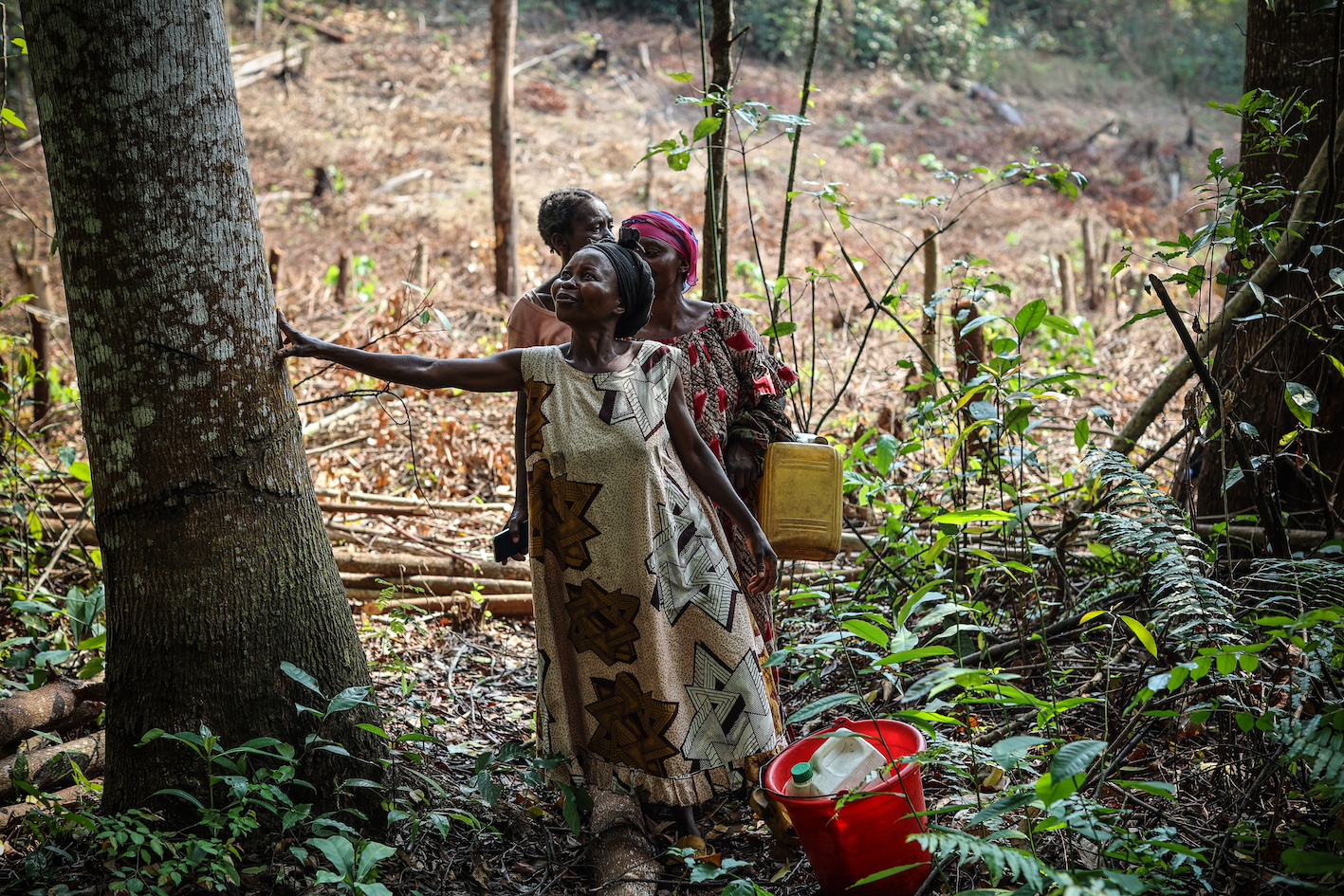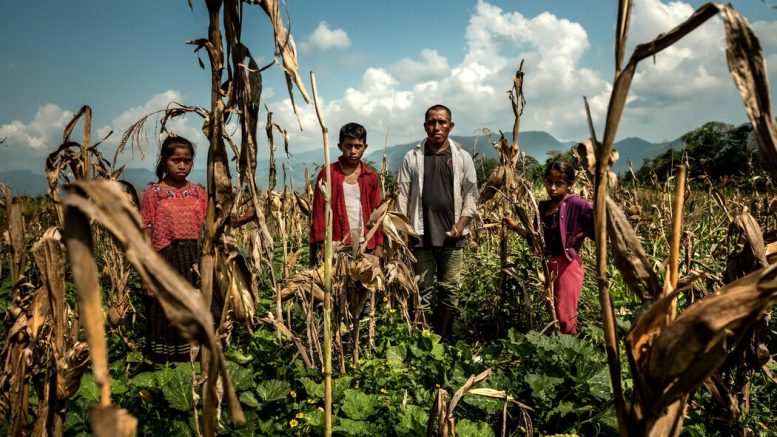Climate change is one of the most serious threats to the culture and way of life of the indigenous peoples of Central America. The increasing frequency of extreme weather events such as droughts and floods, as well as changes in ecosystems, are threatening traditional farming practices and the knowledge systems accumulated over centuries. These peoples, who have adapted to their environment for centuries, are now facing challenges that could destroy their way of life and cultural practices. As a result, the need to adapt to new climate conditions is becoming not just a matter of survival, but also a key aspect of preserving their identity and cultural heritage.
Deadly Heat and Fire: How Climate Change Threatens Lives and Cultures of Indigenous Peoples in Central America
As a result of intense heat and drought in April and May 2024, Mexico and Central America faced some of the most destructive wildfires ever seen. Howler monkeys were reported falling from trees, and parrots and other birds were seen falling from the sky. A state of emergency was declared in Belize as fires destroyed tens of thousands of hectares of forests with unique biodiversity. Farmers suffered huge losses due to the destruction of crops and homes, and residents suffered from deteriorating air quality and sleepless nights in the unbearable heat. Many of them risked their lives battling the raging fires.
When rains brought relief from the bushfires in June, the public focused on the cause and trying to identify the culprits. Many began to point to the slash-and-burn farming practices of Belize’s indigenous communities as the root cause. But this simple response ignores the deep roots of the climate crisis, is not based on science, and only exacerbates indigenous grievances.

Sparks of Chaos: The Impact of Wildfires in Climate Disasters
On June 5, one of Belize’s leading news organizations published an article titled “Are Primitive Farming Methods Causing Forest Fires?” The article blamed “slash-and-burn farming” for the country’s wildfires, calling for the practice to be abandoned as destructive.
Shortly after, another article appeared arguing that “uncontrolled agricultural fires caused by climate change, global warming and droughts have turned slash-and-burn agriculture from a solution into a problem.” This conclusion was further supported by the Prime Minister of Belize, who also noted that “slash-and-burn agriculture should be a thing of the past.”
While some of the recent forest fires in Belize are indeed linked to agricultural burning, and poor forest clearing practices can worsen air quality, blaming slash-and-burn agriculture for these fires ignores the broader context and factors contributing to them, including global warming.
May 2024 made history as the hottest and driest month ever in Belize, part of a global trend of extreme temperatures. June 2024 also marked the 13th consecutive “hottest month” in the world. However, such claims often confuse traditional slash-and-burn farming methods with the unique “milpa” system used by Belize’s indigenous people for centuries.

Indigenous Knowledge in Danger: Undermining Traditions and Cultural Identity
In Belize, indigenous Mayan farmers use a traditional farming method known as milpa, in which fire plays a key role in preparing fields and improving soil quality. In this practice, small patches of forest are cleared and burned, then planted with corn, beans, squash, and other crops. After one to two years of cultivation, the fields are left fallow, allowing nature to regenerate the forest cover, while farmers move on to new plots, following a cyclical model in which the land is reused after recovery.
Often criticized as slash-and-burn agriculture, the milpa system has long been considered environmentally unsustainable. This view has been reinforced by long-standing myths and misconceptions that portray indigenous agricultural practices, particularly the use of fire, as wasteful and inefficient. In Belize, negative perceptions of slash-and-burn agriculture have contributed to many colonial and postcolonial interventions aimed at modernizing Mayan agricultural practices. However, recent research shows that indigenous lands around the world experience slower rates of deforestation and degradation than unprotected areas. In Belize’s southern Toledo District, home to a significant Mayan population, forest cover levels reach 71%, well above the national average of 63%.
Additional research has shown that the modern species composition of Mesoamerican forests was shaped by ancient Mayan agricultural practices. In Belize, fire has been found to play a key role in maintaining ecosystem health and resilience, and moderate levels of disturbance caused by milpa can enhance biodiversity. Properly managed milpa systems help maintain soil fertility, promote long-term carbon storage, and enrich forest vegetation. Research has also shown that previous estimates of forest loss in southern Belize significantly overestimated the rate of deforestation caused by milpa practices by failing to account for the rotational process. Many scientists now believe that milpa represents a more sustainable alternative than most other permanent agricultural systems in the humid tropics. These findings have contributed to a growing recognition of the role of indigenous peoples in developing nature-based climate solutions that improve quality of life.
Unfortunately, research in the region has found that climate change is negatively impacting the sustainability of milpa agriculture, forcing farmers to abandon traditional practices and resort to ineffective measures in an attempt to adapt. In some cases, this has resulted in a decline in biodiversity and a weakening of the sustainability of the milpa system. Additionally, the decline in youth engagement is exacerbating the situation, leading to the loss of traditional ecological knowledge passed down through generations. All of these factors are transforming and undermining life strategies that have proven effective for millennia. Rather than encouraging Mayan farmers to abandon slash-and-burn agriculture, we believe it is important to support these communities’ efforts to adapt to changing climate conditions.

